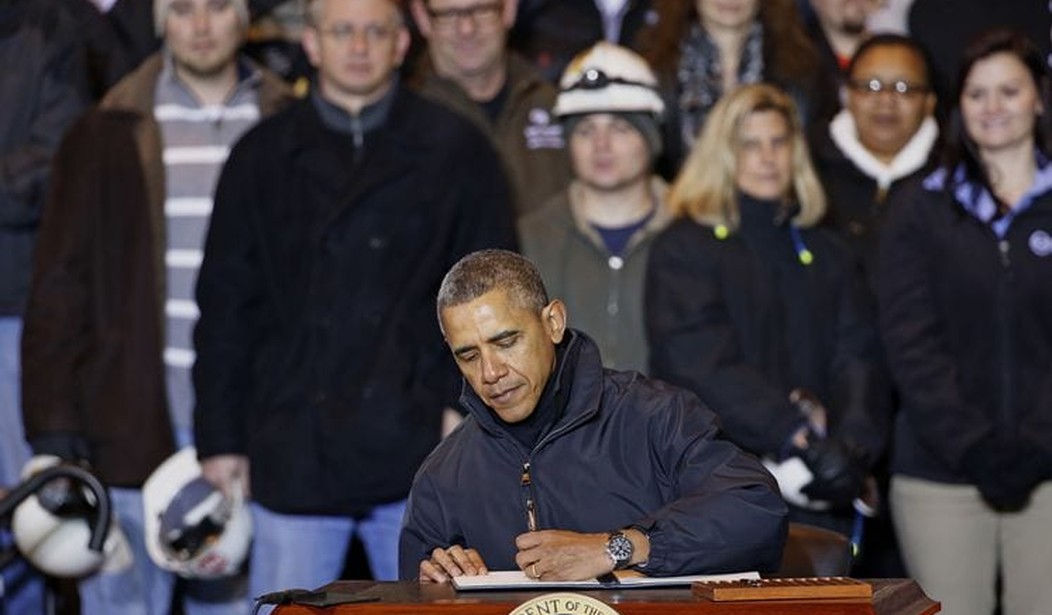WASHINGTON – President Obama wasted little time implementing one of the major initiatives he proposed during his State of the Union address – a retirement savings plan aimed at workers who don’t qualify for pension benefits.
The president sidestepped Congress to sign an executive order creating myRA, which permits workers to have money deducted tax-free from their paychecks and invested in bonds. The accumulated funds will then be available to the worker when he or she retires.
“It’s a new savings bond that encourages folks to build a nest egg,” Obama said in the State of the Union. “MyRA guarantees a decent return with no risk of losing what you put in.”
Republicans have had practically nothing to say about the initiative even though it was executed via executive order, a process that GOP lawmakers maintain Obama uses to excess in general defiance of the Constitution. But the new program has failed to draw objections from lawmakers.
Even without the Republican denouncement, myRA has attracted only tepid enthusiasm from organizations that might normally be expected to hail a new benefit for future retirees.
A. Barry Rand, the chief executive officer of AARP, said the creation of starter retirement accounts like myRA “could help encourage more private retirement savings for those without employer plans.” But he further noted the program could prove even more effective if workers were provided with more options and enhanced investor protections.
“It’s not what I would describe as an earth-shattering move,” said Brian Graff, executive director and chief executive officer of the American Society of Pension Professionals & Actuaries. “It’s going to help some people without a plan save for retirement.”
But that in itself covers a lot of territory. Most American workers don’t have a pension benefit related to their jobs. Social Security was intended to supplement retirement income and, despite advances, the monthly check doesn’t generally meet a retiree’s needs.
Obama in the past voiced support for automatic employee enrollment in employer-run Individual Retirement Accounts – IRAs – but opted instead for the voluntary plan. The administration has long sought to increase savings, citing a number of statistics establishing that American workers aren’t properly prepared for retirement.
The Center for Retirement Research at Boston College found that 53 percent of households are at risk of not having enough invested money to maintain their living standards in retirement. The accounting firm of Ernst & Young maintains 59 percent of new middle-class retirees will outlive their savings. While 68 percent of U.S. workers have access to some retirement benefits, only 54 percent participate in those available plans.
Obama said in remarks delivered at the United States Steel Corp.’s Irvin Plant in West Mifflin, Pa., during a signing ceremony on Wednesday, that “for those of you who don’t have a 401(k) on the job, don’t have a pension on the job, don’t have a mechanism to start saving — especially younger workers — you can get started now. And in an emergency, you can withdraw contributions without paying a penalty. So it’s a pretty good deal. And what I’m hoping is that working Americans will take a look, because I want more people to have the chance to save for retirement through their hard work. And this is just one step that we can take to help more people do that.’”
Under the plan, workers can make an initial investment in a myRA for as little as $25 with subsequent investments reaching as low as $5. The investments are expected to be made through payroll deductions and carry the government’s backing much like a savings bond – meaning the account balance can’t drop.
The accounts are transportable, meaning workers can carry the account with them from one job to the next, and can be rolled into an Individual Retirement Account at any time. Once an account reaches $15,000 it must be rolled into a Roth IRA.
Businesses won’t handle the accounts but they are expected to offer the program to individual workers. Workers can invest if they make less than $191,000 a year.
There won’t be any employer contribution involved in myRA like there is in IRAs, so the investment won’t prove as lucrative. The savings will accumulate over time, but the low-risk investment in government bonds is unlikely to deliver a substantial return. The Thrift Savings Plan Government Securities Investment Fund, which has been offered to federal employees for years, generated an average annual return of 3.61 percent from 2003 to 2012. In 2012 alone, the return was a paltry 1.47 percent. The savings would, however, compound, resulting in at least a modest nest egg.
Sen. Tom Harkin (D-Iowa), chairman of the Senate Health, Education, Labor and Pensions Committee, commended Obama “for recognizing that we are facing a retirement crisis. The president is doing everything he can to make the system work better for middle class families, but he has limited tools.”
Despite his support for the administration, Harkin has introduced his own retirement legislation that substantially follows the myRA program. His USA Retirement Funds Act would make the program available to everyone, including the more than 61 million people without access to a workplace retirement plan and the 14.5 million people who are self-employed.
The Harkin plan differs from myRA in that employees would be automatically enrolled at a rate of 6 percent per year, but could choose to raise, lower, or stop their contributions. Benefits would be paid monthly for life, and participants would be shielded from market volatility and other risks. Like the Obama plan, it’s built to be portable.
Also weighing in with a possible retirement alternative are Sen. Susan Collins (R-Maine) and Sen. Bill Nelson (D-Fla.), chairman of the Senate Special Committee on Aging. Their bill, the Retirement Security Act of 2014, encourages small businesses to provide retirement coverage to their employees by allowing businesses to join multiple employer plans, thus lowering costs by sharing administrative costs.









Join the conversation as a VIP Member